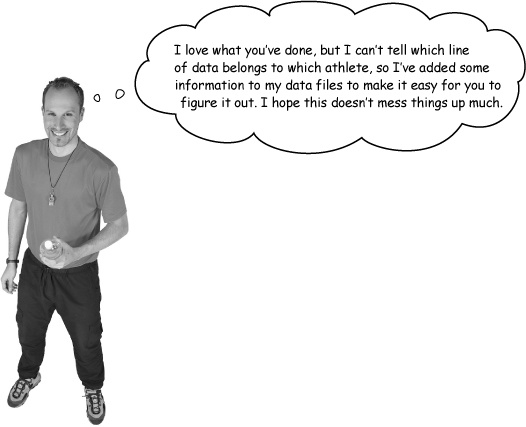Chapter 6. Custom data Objects: Bundling code with data

It’s important to match your data structure choice to your data. And that choice can make a big difference to the complexity of your code. In Python, although really useful, lists and sets aren’t the only game in town. The Python dictionary lets you organize your data for speedy lookup by associating your data with names, not numbers. And when Python’s built-in data structures don’t quite cut it, the Python class statement lets you define your own. This chapter shows you how.
Coach Kelly is back (with a new file format)

The output from your last program in Chapter 5 was exactly what the coach was looking for, but for the fact that no one can tell which athlete belongs to which data. Coach Kelly thinks he has the solution: he’s added identification data to each of his data files:

If you use the split() BIF to
extract Sarah’s data into a list, the first data item is Sarah’s name,
the second is her date of birth, and the rest is Sarah’s timing
data.
Let’s exploit this format and see how well things work.
Do this!
Grab the updated files from the Head First Python website.